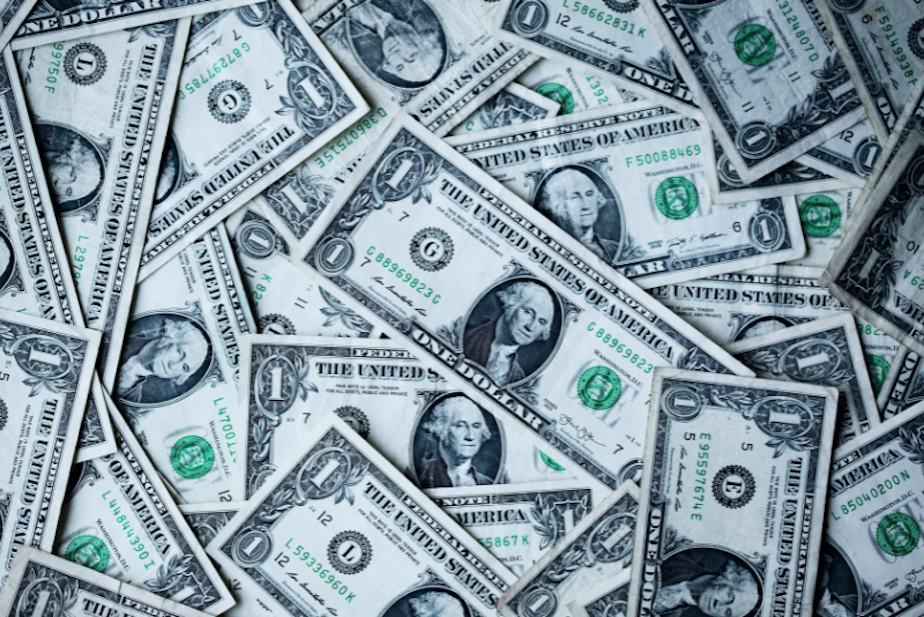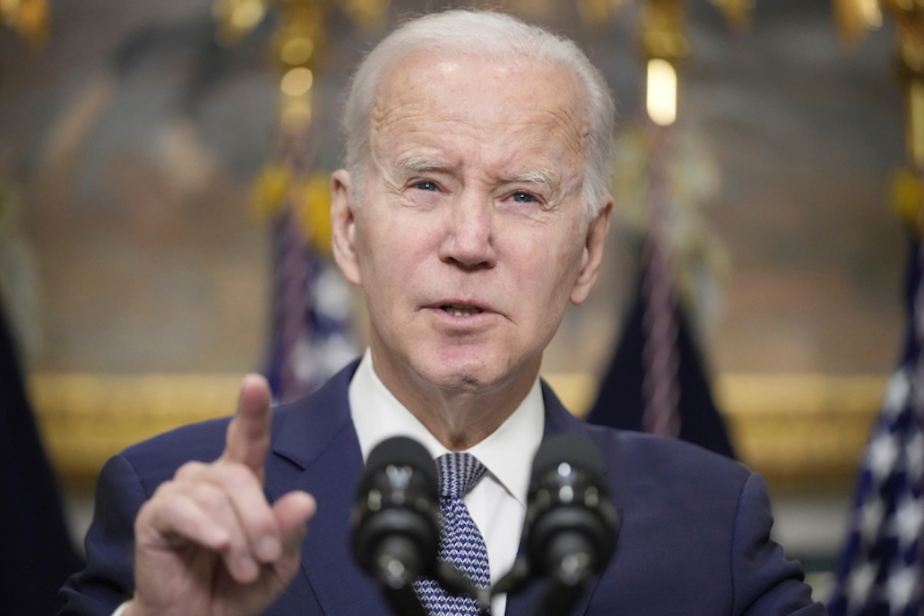Cash is King County: Today So Far

- Certain King County businesses are now required to accept cash, and cannot go cashless.
- Seattle is bringing back its graffiti-cleanup program.
- Mass transit across Western Washington is getting a surge of funding to pay for electric and hybrid buses.
This post originally appeared in KUOW's Today So Far newsletter for June 28, 2023.
Quick hits
- Family of trans teen sues after insurance refuses to cover gender-affirming surgery
- Global heat waves show climate change and El Niño are a bad combo
- An original Princess Leia dress found in an attic could be yours — for as much as $2M
There are only so many puns I can spin out of cash being king in King County, so getting straight to the point: The King County Council has voted in favor of requiring businesses to accept cash. But before you start searching your couch cushions for coins and dollar bills, there is some nuance around this new law, and some exceptions to the rule.
First of all, this only affects businesses in unincorporated King County. So we're talking about places like White Center, Bryn Mawr-Skyway, or most rural areas in the county. This does not influence Seattle, Bellevue, Auburn, or all the other cities in the county that have their own local governments. Also, businesses can apply to be exempt from the cash law if they feel they have security or "hardship" concerns. It only applies to in-person transactions (not online or automated kiosks, etc.). And businesses are only required to accept cash payments up to $200.
King County's cash law comes as cashless transactions are growing in popularity. It is also promoted as a protection for "unbanked" people, those without access to a bank account or bank cards. For more on that, KUOW's David Hyde has the full story here.
Sponsored
Seattle is bringing back its graffiti-cleanup program.
The mayor's office says that graffiti in Seattle has increased by 50% since 2019. You might recall that Seattle hyped a graffiti abatement program in 2022. That pilot was focused on Belltown. Now, the mayor's office says that 100% of reported graffiti has been taken down within 10 business days over the past year, and 98% has been cleaned up within two days. This next phase of the program will shift focus to downtown and the Chinatown-International District.
An interesting angle of this effort is the city's partnership with Uplift Northwest. The organization provides job training and other services to folks experiencing homelessness and poverty. Seattle's need to clean up graffiti is being turned into an opportunity for job training through Uplift Northwest. The organization will provide three work crews for the program. Read more here.
This next bit of news is shocking. It will really charge you up about the surge of funding for electric and hybrid buses coming to Western Washington.
Buses are the conduit to the world for many in our region who do not rely on cars. There is a circuit of local transit agencies getting wired federal grant money to pay for EV and hybrid upgrades, one of which is King County Metro. The feds are giving Metro $33.5 million to purchase 30 electric buses. These buses are slated for routes in low-income areas.
Sponsored
These local developments are part of a national effort to amp up mass transit systems with electric infrastructure. The Federal Transit Administration says this funding will prompt a battery of 1,700 American-made buses, about half of which will be zero-emissions models. Others will likely be hybrid models, like the 11 diesel-electric hybrid buses that the Whatcom Transportation Authority is now looking to purchase. Nationally, the idea is to put the USA on track to cut mass transit emissions that hertz the environment and contribute to climate change. Read more here.
AS SEEN ON KUOW

DID YOU KNOW?
Sponsored
The roots of the word "graffiti" stretch far back into history, all the way back to ancient Greece. The Greeks used the term "graphein" to define writing and drawing. As with all language, it evolved over time. Meanings and nuance change. The Greek word fed into the Italian "graffiato," which became the English "graffiti." Over history, these words not only meant writing or drawing, but also "scratching" because writing/drawing could also be scratched into walls and pottery. As with this word, the practice of placing names and images in public view (whether by scratching or using charcoal, paint, etc.) has been a phenomenon ever since ancient times, such as this artwork discovered at an archaeological site in Pompeii (which, despite all the clickbait out there, is not the earliest depiction of a pizza. I mean, come on, tomatoes weren't in Italy 2,000 years ago, and mozzarella wasn't a thing until about 900 years ago. You're just angering the foodies with all this.).
The modern use and concept of the term "graffiti" began gaining popularity in the 1960s. It is believed to have started in Philadelphia in the early '60s, and then spread across the East Coast through the 1970s, and on to the rest of the USA. The New York Times began profiling graffiti taggers in the early '70s. And by 1974, graffiti had gained enough momentum that Norman Mailer published "The Faith of Graffiti," which has been called the first major coverage of graffiti as an art form and culture.
ALSO ON OUR MINDS

Sponsored
"Bidenomics." It's the term the press (and the White House) are now using to sum up the president's economic agenda, even though President Biden says he doesn't "know what the hell that is ... But it's working."

